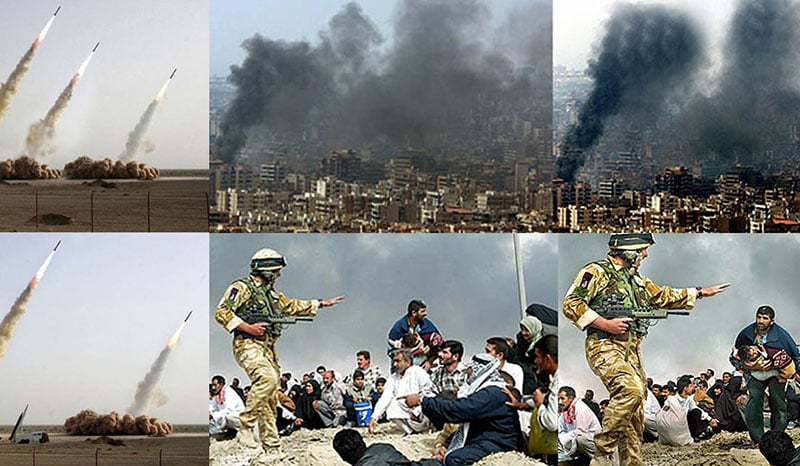Tag: Michael Kamber
-
Photos From Vietnam, Bronx, Iraq That Shaped A Journalist
10 Images That Shaped The Career Of A Photojournalist Who Founded The Bronx Documentary Center “If you’re committed, you went all the way.” via BuzzFeed News: https://www.buzzfeednews.com/article/piapeterson/10-photos-mike-kamber-career-influence Mike Kamber has had many, many lives. The founder and executive director of the Bronx Documentary Center worked as a documentary photographer for over two decades, and his…
-
The Transformation Of Pathology Into Pathos Or The Military Does What It Does And It Does It We « The Spinning Head
Link: What confuses me is the thought behind the video and comments: Michael Kamber is surprised that a system meticulously designed to censor the likes of him, is…..censoring him. Isn’t this precisely what this system is designed to do?
-

Eyes Open, Back Into the Afghan Crucible: Michael Kamber Returns – NYTimes.com
Eyes Open, Back Into the Afghan Crucible How does it feel to be a photojournalist preparing for an assignment that’s left a friend of yours badly injured? Michael Kamber shares his thoughts. via Lens Blog: http://lens.blogs.nytimes.com/2010/12/07/eyes-open-back-into-the-afghan-crucible/ The night before I leave Paris, Alissa J. Rubin, the Times’s bureau chief in Kabul, e-mails me to say…
-
Kamber response to Teru's attacks | Lightstalkers
Link: Though you were in New York, thousands of miles away from where the two were killed, you immediately publicly criticized these photographers—both with decades of experience—for their own deaths. Your Facebook post reads, “Four guys hit with the same round were too close together.” In fact, they may have been climbing into a truck…
-

Interview: Michael Kamber on Photojournalism Ethics and the Altering of Images
Interview: Michael Kamber on Photojournalism Ethics and the Altering of Images Michael Kamber is a photojournalist who has been working around the world since 1986; he has traveled to Iraq, Afghanistan, Liberia, the Sudan, Haiti, via PetaPixel: http://petapixel.com/2015/08/04/interview-michael-kamber-on-photojournalism-ethics-and-the-altering-of-images/ Today you just hit the filter button on your Instagram, and you’ve got this wildly impressionistic photograph…
-
Photojournalists On War: The Untold Stories From Iraq
Link: Photojournalists On War: The Untold Stories From Iraq – British Journal of Photography Photojournalists On War is the result of five years of interviews with some of the world’s leading photojournalists. However, it’s also the fruit of Michael Kamber’s frustration over the harrowing images that were never shown or published before
-
Photojournalists on War: Untold Stories from Iraq
Link: Photojournalists on War: Untold Stories from Iraq | Le Journal de la Photographie As Dexter Filkins suggests in the introduction to his book Photographers on War, the war was the first and last of its kind. Michael Kamber is one of the witnesses of this conflict and its endless acts of cruelty. “When you’re…
-

A New Oral History of Documenting the Iraq War, ‘Photojournalists at War’
Photographers’ Oral History of the Iraq War A new book, “Photojournalists at War,” is an oral history of the Iraq war from the perspective of three dozen photojournalists who documented it from the front lines. via Lens Blog: http://lens.blogs.nytimes.com/2013/03/14/photographers-oral-history-of-the-iraq-war/ As the 10th anniversary of the Iraq war’s start approaches, Lens highlights “Photojournalists at War,” an…
-
War Reporters Train in the Bronx, Complete With Blood, Smoke and Gunfire
War Reporters Train in the Bronx, Complete With Blood, Smoke and Gunfire An organization founded by friends of Tim Hetherington simulates real war-injury scenarios at the Bronx Documentary Center, complete with pools of blood, contorted limbs and frenetic movement amid smoke-clad air, in order to train photographers and journa via WIRED: http://www.wired.com/rawfile/2012/10/risc-training-bronx-documentary-center/ “Tim was my closest…
-
Witnesses to War
Link: Witnesses to War – NYTimes.com Michael Kamber decided that someone had to gather all of his fellow photojournalists’ accounts and unpublished images in one place so there would be, in his words, “an accurate history.” So he took on the task himself and started formally recording his colleagues. He has collected 39 of these…
-
Michael Kamber Looks Back on Iraq War
Michael Kamber, Lens When the war started, photojournalism did show its power to sway public opinion. But it was in those early years as well — in some of the same images — that we saw photojournalism’s failures.
-

Deeper Into Fathomless Afghanistan: Michael Kamber's War Journal – NYTimes.com
Deeper Into Fathomless Afghanistan On his latest tour of Afghanistan, the photojournalist Michael Kamber finds that the war is becoming more intricate and more complicated. via Lens Blog: http://lens.blogs.nytimes.com/2011/01/18/deeper-into-fathomless-afghanistan/ In early December, Alissa J. Rubin, The Times’s bureau chief in Kabul, takes me along on a visit to meet with the public affairs team at…
-
Photojournalism: Wait, worry. Who cares? – British Journal of Photography
Four months after Neil Burgess famously called time of death on photojournalism, the debate is still raging. In fact, it’s been around for decades, as photographer Michael Kamber tells Phil Coomes of the BBC. “I remember arriving in New York in 1985 only to find that I’d arrived too late: photojournalism was dead. This was…
-
Joao Silva: 'Acting Despite Fear.' An Interview by Michael Kamber – NYTimes.com
The following interview was conducted in Baghdad on Dec. 9, 2009, by Michael Kamber, a seasoned conflict photographer himself (“Hard Lessons From Somalia,” “A Long and Dangerous Road,” “Minders, Fixers, Troubles”). He is working on a book about photojournalism and war photography. This condensed version of their conversation begins with Mr. Silva describing his background.…
-
An Interview with Michael Kamber of the New York Times « The Leica Camera
A seasoned photojournalist acclaimed for his brilliant and sensitive coverage of conflict zones around the world tells the amazing story of his evolving career and his Leica connection Link: An Interview with Michael Kamber of the New York Times « The Leica Camera
-

“Restrepo” and the Imagery of War – Lens
‘Restrepo’ and the Imagery of War With the premier nearing of his documentary, “Restrepo,” Tim Hetherington takes time to talk with Michael Kamber about the future of photojournalism. via Lens Blog: http://lens.blogs.nytimes.com/2010/06/22/behind-44/ The documentary “Restrepo,” directed by Mr. Hetherington and Sebastian Junger, will open Friday. Last week, Mr. Hetherington sat down with Mr. Kamber in…
-
On Assignment: Hard Lessons in Somalia
Lens Blog – NYTimes.com: Few photographers will find themselves in as dangerous a setting as Somalia. But some of the lessons learned there by Michael Kamber, who is at work on a book about photojournalism and war photography, can be applied to many challenging situations.
-
Missing ‘the Big Story,’ but Not the Story – New York Times Blog
By MICHAEL KAMBER Photojournalist Joao Silva and I jumped in a car and searched the streets. We found U.S. soldiers towing a damaged Humvee. It had been struck by a roadside bomb. Days later we were nearly knocked off our feet by the Red Cross bombing, which killed scores. Bodies were scattered across an entire…
